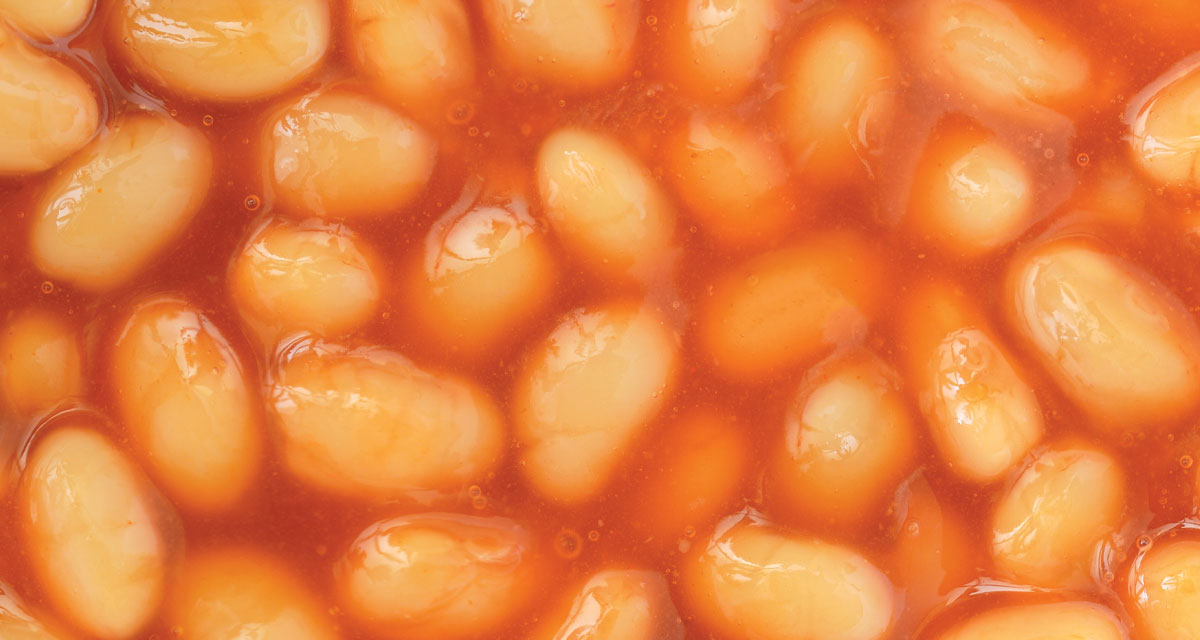Grandparents, history books, and documentaries tell the story of the decade-long Great Depression era. A time of bare grocery store shelving, sparse ingredients, and cooking to achieve survival-based nutrition. Americans thought they would never expect to experience another great period of uncertainty. Significantly, the task of stretching the grocery bill expense these days has led to Depression-era foods making a comeback. While some recipes may bring a fond memory from your childhood or household, others, understandably, such as Eleanor Roosevelt’s prune pudding, never did make the top-ten list of favorite Depression-era meals.
#1: Baked Beans
Perhaps not always a side dish. Baked beans have proven over generations to be a low-cost and filling meal, whether you like the Boston-style beans, including bacon, honey, and molasses, or ground beef, bacon, and four varieties of beans. Everyone has an old family recipe to put a unique spin on a Depression-era favorite. According to a study, 57% of adolescents approve of baked beans!
#2 Beany Weenies
Dating back much longer than the ol’ West cowboy campfire foods, beans and sliced hot dogs became a staple in the 1930s. As an inexpensive food, the protein combination appeased families to the present day. Today, the recipe has evolved into a casserole made with corn, fresh green bell peppers, onions, chili powder, tomato sauce, and melted cheese, served with biscuits.
#3: Peanut-Butter Bread
At a 4,400% increase worldwide, starting in 2020, individuals began searching the Internet for “yeast-less bread recipes.” Originating with the 1932 Five Roses Cookbook, published by a Canadian Flour Company, a “quick bread” recipe resurfaced. Containing baking powder, this bread meant that makers did not need to spend time kneading or waiting for the yeast to rise. Combined with peanut butter, rich in protein, this is a hearty dessert bread for anyone who desires a taste of imaginative comfort!
If you are interested in making a quick bread, start researching names like “Lemon Chia,” “Brazilian Cheese,” or “Low-Carb Lemon Poppyseed.” Yum!
Baking Fact: Need more milk or heavy cream? Consider using water to make up the difference!
#4 Wacky Cake
Another astonishing Internet discovery was made by searchers looking for “a cake without eggs, butter, and milk.” Bakers soon realized that “wacky cake” was delicious! As pantry staples disappear from kitchen cupboards and grocery store shelving, consider whipping up an adaptable, if not unusual, cake.
Recipe: Preheat the oven to 375 degrees. Grease an eight-inch pan. Mix one-and-a-half cups of all-purpose flour, one cup of sugar, one-fourth-cup unsweetened cocoa powder, one teaspoon of salt, and one teaspoon of baking soda; then, poke three holes into the mix and add one each of the following: five tablespoons of vegetable oil, one tablespoon of white vinegar, and one teaspoon of vanilla extract. Finally, pour one cup of water or coffee over the top and bake for 35 minutes.
Baking Tip: Depression-era folks learned the best way to maintain the characteristic of a moist, fluffy cake while substituting eggs, butter, and milk was to use apple cider vinegar.
Fact: Rice Pudding was another inexpensive “luxury” dessert that became popular during the Great Depression.
#5 Potato Soup
Think of the versatility of the potato. Whether sliced and fried, baked, or mashed, the potato was one crop most farmers could plant and depend upon across the seasons. Soup, too, afforded many who didn’t have a well-stocked pantry to survive on minimal ingredients, such as potatoes, water, salt, and pepper. If flour was unavailable as a thickening agent, eggs became the substitute.
Fact: Hot dogs, potatoes, and onions became synonymous with “The Poor Man’s Meal.”
#6 Potato Pancakes
Why throw away mashed potatoes? To ensure food was not wasted, the Depression-era cookbook also came in handy. If you fry the potato dipped in egg, then cover it with flour, salt and pepper, the outcome is a crispy pancake you can serve with sour cream!
#7 Dandelion Salad
Foragers who found edible mushrooms, berries, and nutrient-rich plants, like dandelion, created a “Depression salad.” Despite the season, arugula or Swiss chard may be an adequate substitute for the bright-yellow flower, adding a sweet color to the day’s meal.
Fact: First Lady Eleanor Roosevelt insisted on running the White House coping with the same challenges all Americans faced. A few recipes she developed were a gelatin salad containing mystery vegetables; the pairing deviled eggs and mashed potatoes; wheat bread and coffee (costing seven cents); and spaghetti with boiled carrots!
There’s a reason particular protein-enriched or filling foods survived to the 21st Century. Whether you are looking for a new recipe, recalling a childhood favorite, or trying to find a way to stretch a meal, proven tips are invaluable during times of uncertainty.























